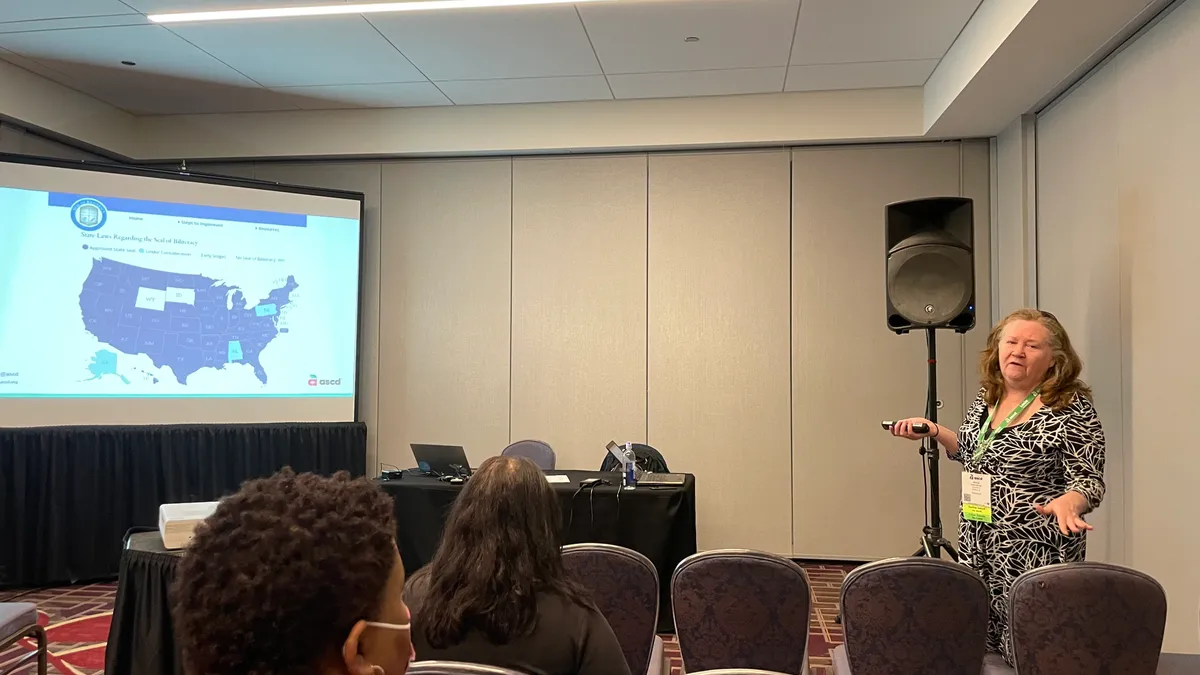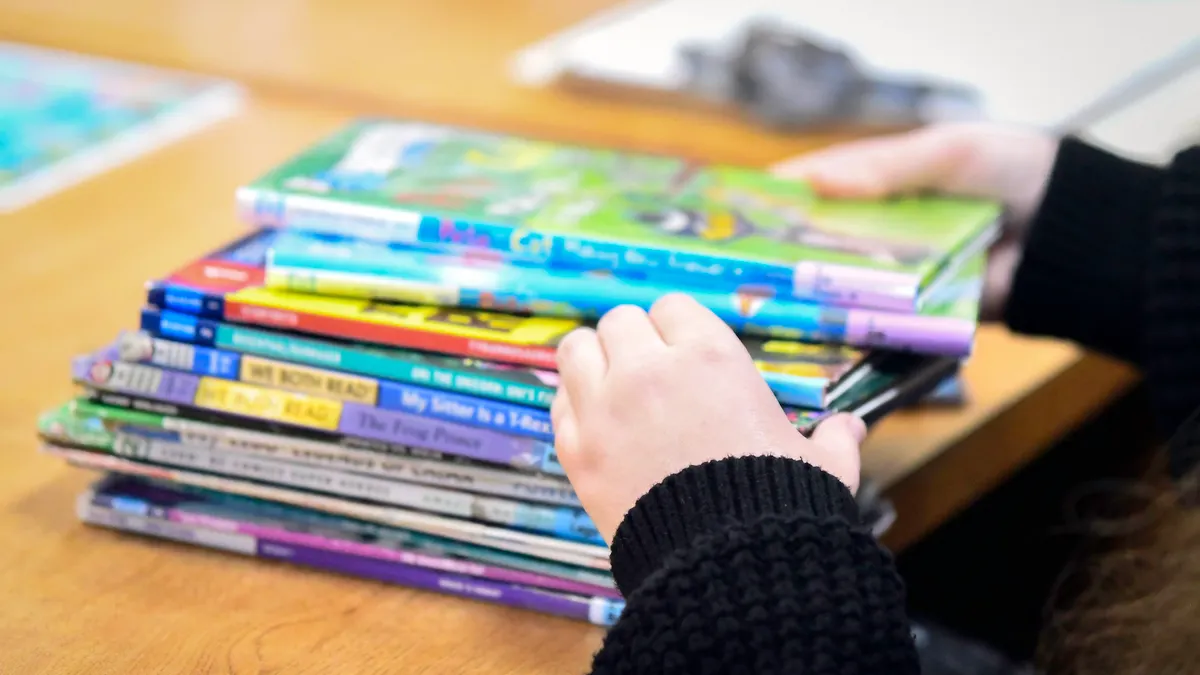CHICAGO — When Alicia Storey conducted a small qualitative study of seven educators formerly identified as English language learners, there were some painful conversations these educators recalled from their time as students.
Storey, an assistant superintendent at Westerly Public Schools in Westerly, Rhode Island, remembers interviewing one former ELL student who told Storey she believed her 3rd grade teacher thought she was dumb.
The woman told Storey she knew this because her teacher gave her coloring books to use while her English-speaking classmates were completing different and more challenging assignments.
“High expectations and putting the bar high is very important,” Storey said during a session Monday at the ASCD annual conference in Chicago. “As educators, they all talked about how you need to raise that bar because your impact is so significant.”
Viewing ELL students in a new way
Among teachers, it can be common to assume an ELL student has a language barrier rather than acknowledging these students are just working to speak a new language, Storey said.
While half the world’s population is bilingual and jobs are increasingly favoring bilingual candidates, Storey said the education field often still views ELL students as having a deficit in their learning. Instead of this deficit-minded approach, educators need to view ELL students from an asset-based mindset, Storey said.
“An asset-based approach, what is it? It’s looking at things and not saying they’re limited in English proficiency. It’s looking at things and saying they’re learning English, just like the [other] 1st graders and 2nd graders are,” Storey said.
ELL populations, meanwhile, are growing in the U.S. These students made up 10.2% of the public school population in fall 2018, according to the National Center for Education Statistics. There were roughly 500,000 more ELL students between 2010 and 2018, NCES data reports.
Throughout Storey’s interviews with the seven educators who were once ELL students, five themes emerged. First, they commonly noted it’s okay to be proud of one's first language. At the same time, they said they felt estranged from their peers and always knew they were different, Storey said. Then, some of those interviewed embraced acculturation because they wanted to be like everyone else.
On top of that, they noted systemic issues they faced as ELL students in school. Finally, they made recommendations while suggesting the power they have as educators can be significant, Storey said.
Storey said it’s important to share these personal experiences so educators can look for ways to address issues ELL students face, such as isolation in school. Solutions can be found in the classroom, in policies and through additional funding, she added.
Moving forward, Storey encouraged educators to embrace culturally responsive ELL teaching in their classrooms and have ELL students work with non-ELL students. It's also important for ELL students to have access to books with characters who look like them or have similar experiences, she said.
Storey outlined specific strategies to ensure ELL students feel like they belong in school, including:
- Learn ELL students' names and how to properly pronounce them.
- Offer one-on-one assistance when possible.
- Use visuals in teaching such as a visual daily schedule.
- Invite ELL students’ culture into the classroom.
- Generally include these students more in learning activities.
Knowing how not to treat ELLs just as important
The educators Storey interviewed said they learned a lot from their negative experiences in the classroom, especially about how not to treat ELL students. The interviewees want to be advocates for these students today, and some also emphasized the need to express more love and empathy toward them, Storey said.
While these educators said as ELL students they felt isolated, marginalized and embarrassed about their culture, they also said all these things can be avoided in the future, according to Storey.
It’s key to build relationships with ELL students in a way that integrates the curriculum and school content, Storey said.
There are unintended consequences when teachers think of ELL students with a deficit mindset, she said. This includes increased stigma, decreased access and opportunity for high-quality education, lowered expectations and segregation of these students.
ELL students “need to be known,” Storey said. “They need to be seen. Just because they’re learning English and they can’t communicate right now doesn’t mean that we can really ignore them.”
Storey said it’s critical ELL students feel like they belong, rather than feeling isolated by not speaking the same language as their classmates. This sense of belonging is especially important today, she said, as COVID-19 caused even more widespread isolation for students.




















